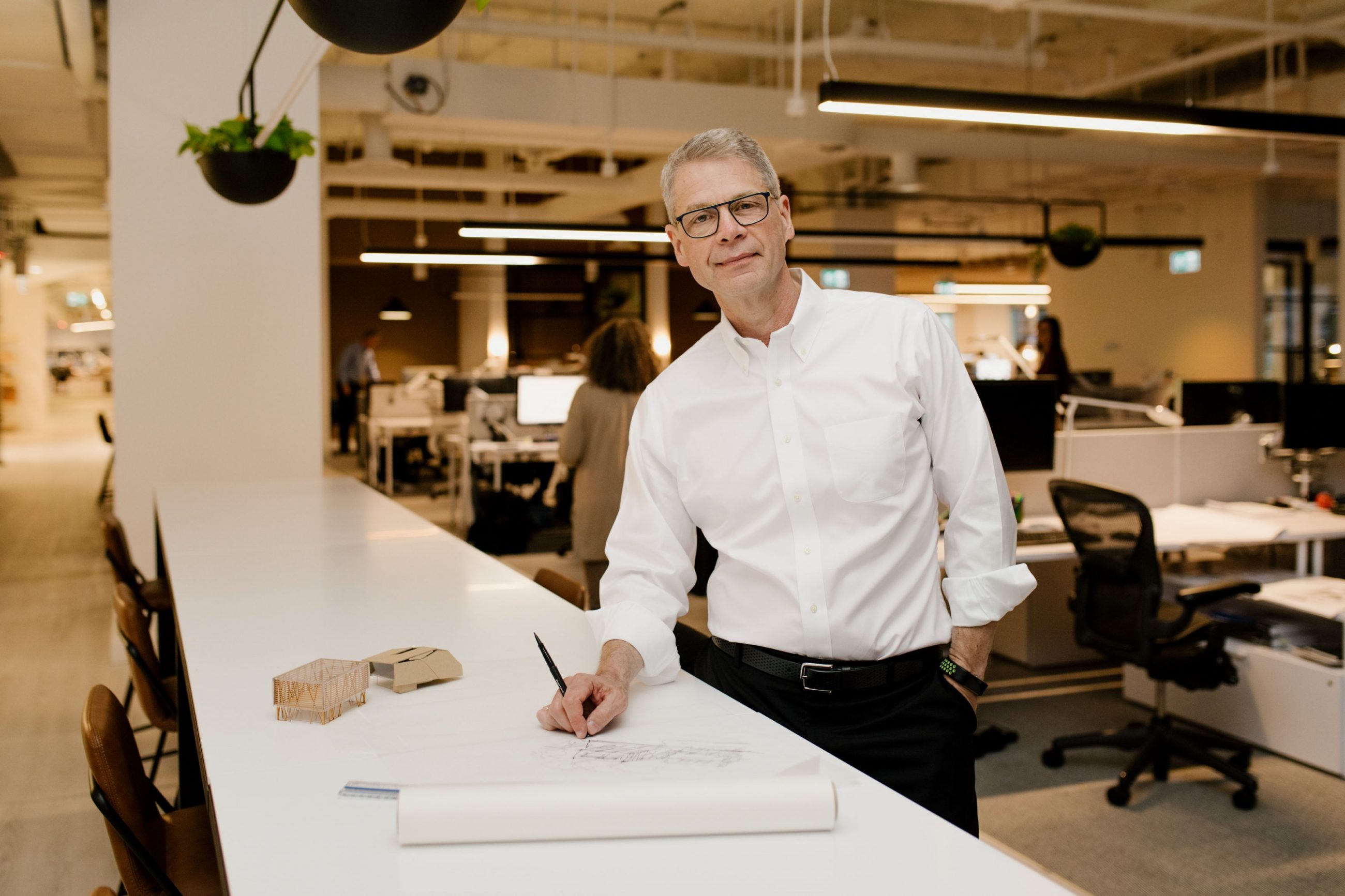
We know that change is needed to fight the impending climate crisis. But what can we do? What’s going to make the biggest difference?
Craig Appelgath, a Toronto-based principal and architect, is recognized for his commitment to green design practices. On top of his project work, he hosts a podcast called Twenty First Century Imperative, where he explores the many facets of climate change with expert guests.
He was recently interviewed for Business 2 Community about his net zero and climate change research and practice. Below is a snapshot of the interview, and the full article can be found here.
Business 2 Community: You are very well-known as an award-winning green architect and urban designer. How can green buildings and effectively planned urban fabric help us deal with climate change?
Craig: Those are both big questions! Or should I say, they lead to potentially very long answers. But in essence I think our guiding principle for designing green buildings, and the urban fabric they comprise, should focus on reducing both operating carbon and embodied carbon. Operating carbon refers to the carbon dioxide emitted from a building, or from the building fabric, as a result of its operation — for example, the CO2 emitted in the process of burning natural gas to heat buildings. Embodied carbon refers to the carbon dioxide released during the process of extracting the raw materials and fabricating components that will become buildings and the cumulative building fabric.
For buildings I think that one of the most important things that we can do to reduce operating carbon is to design highly energy efficient buildings. Also, as we move towards a renewable power infrastructure regime, we should be designing our buildings to be all-electric in both heating and cooling in order to be able to use the zero-carbon electricity from renewable energy sources.
For the urban fabric, in addition to making sure buildings are energy efficient and electric, we should be aiming for increasing the density of our cities and communities. Increasing density in one of the most effective ways to reduce both operating and embodied carbon. This is simply because you need less building material and less energy per capita to create denser urban fabric.
Increasing density is one of the most effective ways to reduce both operating and embodied carbon. This is simply because you need less building material and less energy per capita to create denser urban fabric.Craig Applegath
Business 2 Community: There are still people who do not believe Climate is real. How do we convince these people that it is real?
Yes, hard as it is to believe, there are still a few people who do not think climate change is real, or, alternatively, don’t think it is an important and immediate existential threat. However, I’m not sure we should be investing our limited time and resources in trying to convince them otherwise. As Margaret Heffernan, wonderfully illustrates in her book Willful Blindness, people with fixed ideas about the world will not have them changed simply by presenting them with scientific evidence to the contrary — even where that evidence is absolutely irrefutable.
So, I think that instead of wasting time trying to convince people who refuse to want to understand, we need to spend our time and energy on finding smart, implementable solutions to climate change — solutions that will not only address the very real and significant challenges we face, but will also increase the quality of life for everyone — including the people who are not willing to believe it. Because, if the solutions are tangibly beneficial to even the doubters, they will be less likely to get in the way of the rest of us solving the problem.